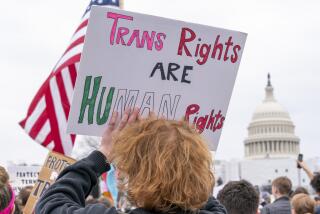Unholster the 2nd Amendment
It’s been 68 years since the U.S. Supreme Court examined the right to keep and bear arms secured by the 2nd Amendment. It’s been 31 years since the District of Columbia enacted its feckless ban on all functional firearms in the capital. It’s been eight months since the second most important court in the country, the U.S. Court of Appeals for the District of Columbia Circuit, declared the D.C. ban -- among the most restrictive in the nation -- unconstitutional. The obvious incongruity of those three events could be resolved soon.
Later this month, the Supreme Court will decide whether to review the circuit court’s blockbuster opinion in Parker vs. District of Columbia, the first federal appellate opinion to overturn a gun control law on the ground that the 2nd Amendment protects the rights of individuals. If the high court takes the case, oral arguments likely will be held this spring, with a decision expected before June 30. (Full disclosure: I am co-counsel for the plaintiffs and am one of the attorneys who initiated the lawsuit.)
The stakes are immense. Very few legal questions stir the passions like gun control. And this round of the courtroom battle will be fought during the heat of the 2008 election. Further, Washington is home to the federal government, making it an appropriate venue to challenge all federal gun laws, no matter where an alleged 2nd Amendment violation might have occurred. Thus, Parker could have an immediate effect not only on D.C. gun regulations but on federal regulations.
Equally important, if the Supreme Court affirms the D.C. circuit’s holding, state gun control laws across the nation could be vulnerable to constitutional attack. But before that happens, two other issues would have to be litigated.
The first is the knotty question of whether the 2nd Amendment can be invoked against state governments. Until 1868, when the 14th Amendment was ratified, the Bill of Rights applied only to the federal government. But in the aftermath of the Civil War, much of the Bill of Rights was considered “incorporated” by the 14th Amendment to bind the states as well. Regrettably, the incorporation of the 2nd Amendment has not yet been settled. And that issue did not arise in Parker because the District of Columbia is a federal enclave, not a state.
The second question is even more complicated: What restrictions on gun possession and use would be permissible? Almost no one argues that 2nd Amendment rights are absolute. After all, under the 1st Amendment, the right to free speech does not protect disturbing the peace; religious freedom does not shield human sacrifice.
Similarly, gun regulations can be imposed on some weapons (e.g., missiles), some people (e.g., preteens) and some uses (e.g., murder). Indeed, the appeals court acknowledged that Washington might be able to justify such things as concealed-carry restrictions, registration requirements and proficiency testing.
But the Constitution does not permit an across-the-board ban on all handguns, in all homes, for all residents, as in the case of the Washington ban (with the exception of current and retired police officers). Somewhere in the middle, regulations will be deemed constitutional even if the Supreme Court upholds the lower court.
Meanwhile, the high court also will have to reexamine its 1939 gun case, United States vs. Miller, which generated more heat than light regarding the 2nd Amendment. The core holding of Miller, stripped of confusing clutter, was that protected weapons must be “in common use” and must bear “some reasonable relationship to the preservation or efficiency of a well-regulated militia.”
Parker is entirely compatible with that holding. Pistols, which are banned in D.C., are self-evidently “in common use,” and they have been carried into battle by American troops in every conflict since the Revolutionary War. But a proper reading of the 2nd Amendment should not attempt to link each and every weapon to the militia -- except to note that the grand scheme of the amendment was to ensure that people trained in the use of firearms would be ready for militia service.
Significantly, the 2nd Amendment refers explicitly to “the right of the people,” not the rights of states or the militia. And the Bill of Rights is the section of our Constitution that deals exclusively with individual liberties.
That is why there has been an outpouring of legal scholarship -- some from prominent liberals -- that recognizes the 2nd Amendment as securing the right of each individual to keep and bear arms.
Considering the text, purpose, structure and history of our Constitution, and the clear weight of legal scholarship, it’s time for the Supreme Court to revitalize the 2nd Amendment, which has lain dormant for nearly seven decades.
More to Read
Sign up for Essential California
The most important California stories and recommendations in your inbox every morning.
You may occasionally receive promotional content from the Los Angeles Times.










